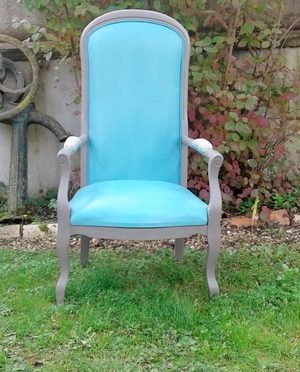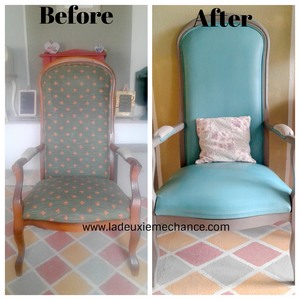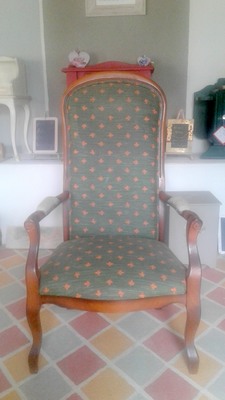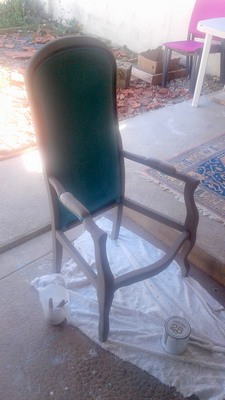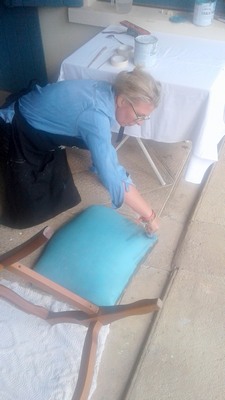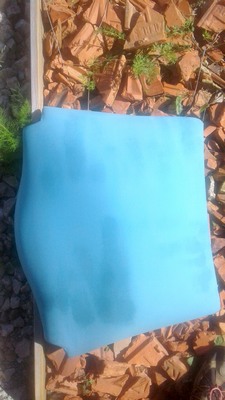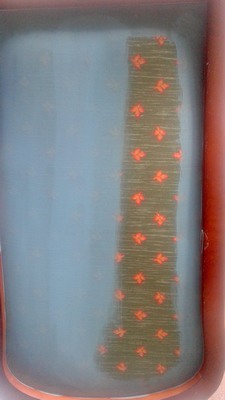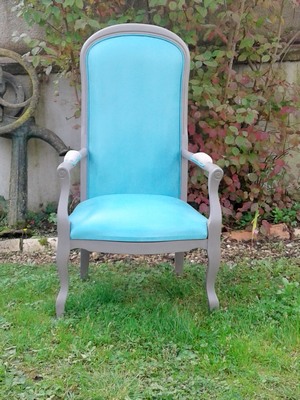Pour ce projet, je les suivantes: 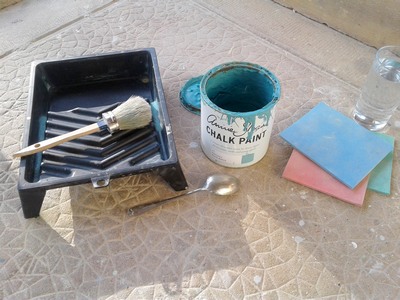
Provence par Annie Sloan
Cire Claire par Annie Sloan
Pinceaux n°8 par Annie Sloan
Brosse à cire par Annie Sloan
Tampons de ponçage par Annie Sloan
Bac à peinture
Eau
Diluez le Provence avec de l’eau pour le rendre plus liquide et faciliter son absorption par le velours. J’ai réalisé mon mélange dans le bac.
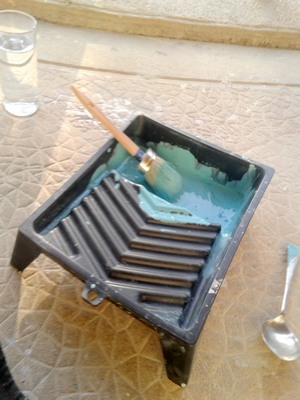
Le peinture doit imprégner la surface plutôt que de pénétrer à l’intérieur du tête de lit, il faut éviter qu’elle soit épaisse car elle s’agglomèrent autour des fibre pour devenir, après séchage, dure et craquante.

Si vous pensez qu’elle n’est pas encore assez fluide, ajouter de l’eau et étalez-la frettant le pinceau. Laissez sécher.
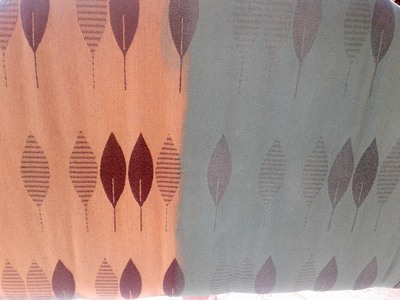
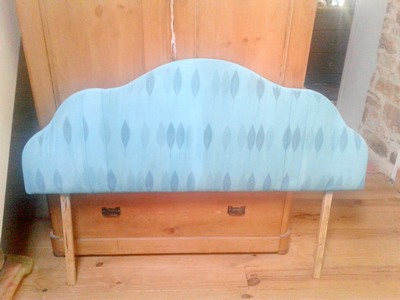
Quand le peinture est sèche appliquez une couche de cire transparente avec le pinceau approprié, ou en passant un chiffon propre et sec à mesure pour obtenir une couverture uniforme. Lustrez la surface pour la faire briller et ressembler à du cuir.

**Testez votre combination de couleurs au préalable pour juger l’effet que la texture et la teinte du tissue auront la nuance de la peinture.
**Tous les tissues, y compris le cuir, peuvent se peindre. Toutefois, plus ils contiennent de coton, mieux c’est car celui-ci absorbe très bien la peinture ou un motif en relief peut devenir très intéressante quand on la peint.

